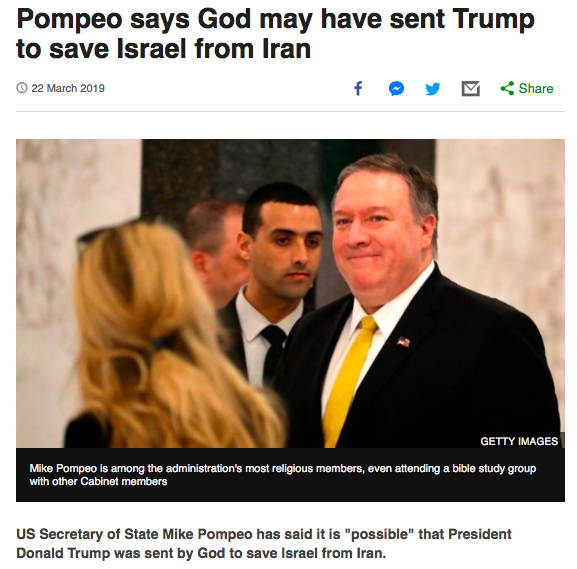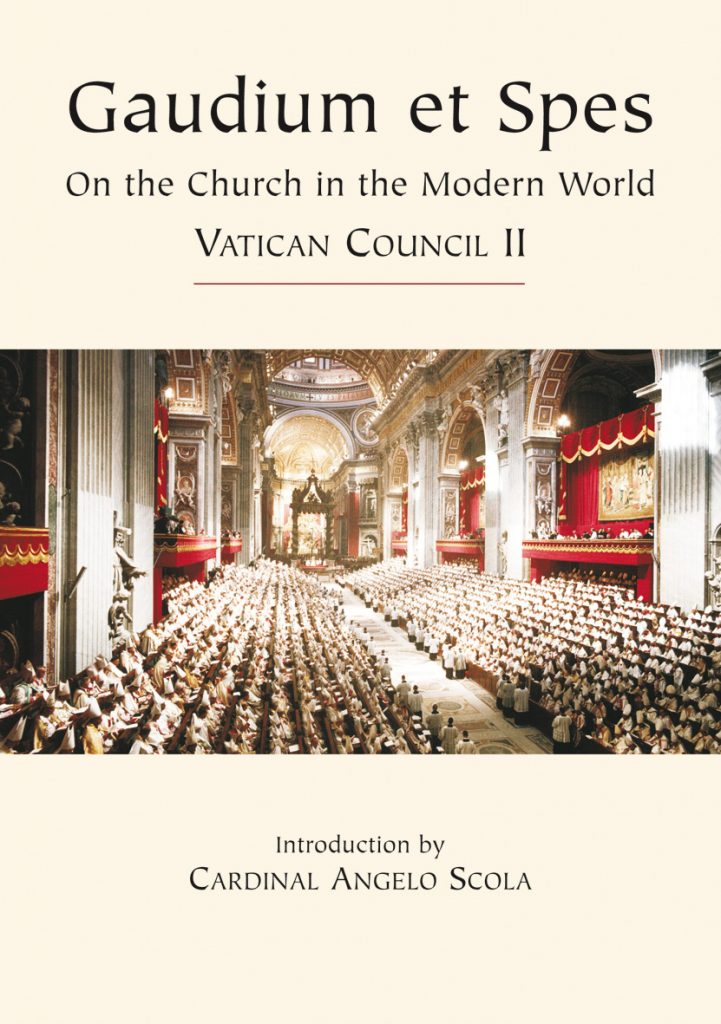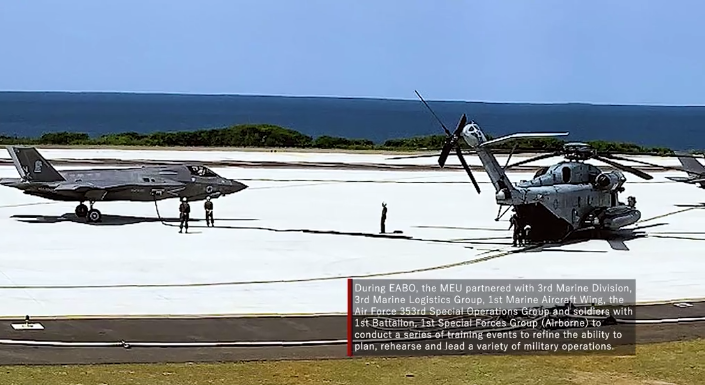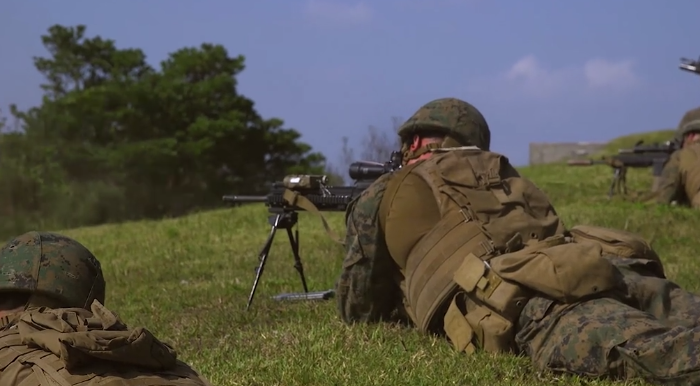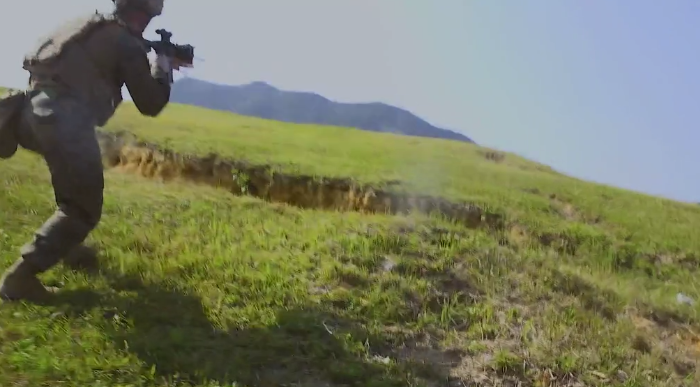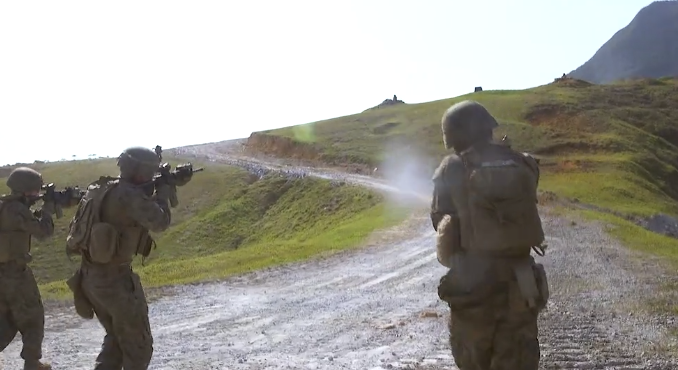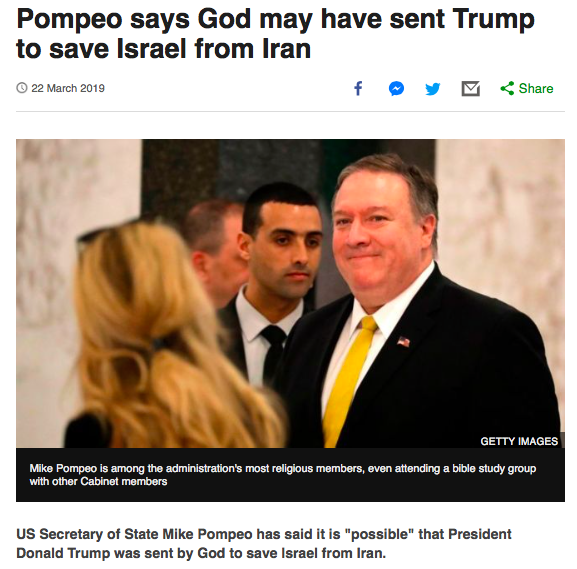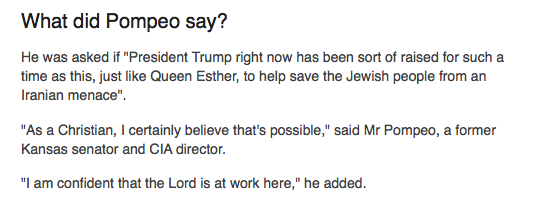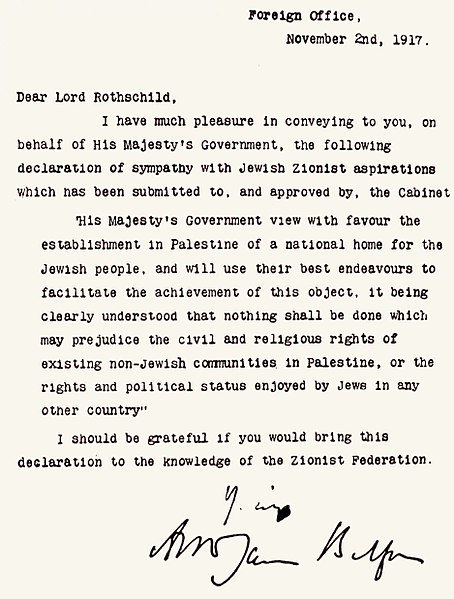On December 2, 1823 in the wake of rebellions in Latin America that had ended Spanish rule in the Western Hemisphere, US President James Monroe announced that European colonial powers that attempted to assert influence in the region would be an overt threat to the national security of the US. Monroe claimed that European monarchies and colonialism were incompatible with the notions of democracy and republicanism that were featured in the New World. Monroe’s proclamation set the stage for US foreign policies for nearly 200 years: US hegemony over Latin America was a natural extension of the messianic visions of Manifest Destiny and US exceptionalism.
Beginning in the twentieth century US President Theodore Roosevelt, desiring to flex the muscles of the nation’s burgeoning policies of imperialism, added the Roosevelt Corollary to the Monroe Doctrine (1905) that stated the US would use its might to ensure the countries in the Western Hemisphere would remain “stable, orderly and prosperous.” The US began policies of intervention in Latin America that became routine for three decades into the twentieth century. After a hiatus during President Franklin D. Roosevelt’s “Good Neighbor Policy,” the Organization of American States was formed in 1948 to protect the Western Hemisphere from dangerous, i.e. communist, elements abroad. As Cold War fears against the “red menace” escalated into the 1950s, US President Harry S. Truman approved a National Security Agency (NSA) memorandum that asserted in typical breathless tones of the era “the Cold War was in fact a real war in which the survival of the free world is at stake.”
Meanwhile, as Latin America became an increasingly important trading partner, the US poured $6 billion into the region by the late 1950s. Latin American nations in the region imported nearly 50 percent of their imports from the US. The US imported about 35 percent of the goods like sugar, coffee, bananas and wool that it consumed from Latin American nations. When Guatemalan President Jacobo Árbenz partially nationalized holdings without compensation of the US-based United Fruit Company, the largest landowner in Guatemala, US President Dwight D. “Ike” Eisenhower ordered the CIA to orchestrate the overthrow of the democratically-elected Árbenz government. Working with reactionary elements in Guatemala in 1954 the CIA installed Carlos Castillo Armas a military dictator who rolled back Árbenz’s reforms and began a repressive purge of Árbenz supporters. The message to reformers in Latin America was clear: Even the most moderate social reforms that effected US corporate interests would be met with the crushing might of the US and its allies in the oligarchies that dominated Latin America. This action set the groundwork for US policy in Latin America for the next 65 years to the present day. In the following passage, Zanchetta quotes from a secret CIA report that attempted to justify the US actions in Guatemala.1 This justification would appear in various iterations in subsequent US misadventures around the globe too numerous to list in this offering.
“It is clear that we are facing an implacable enemy whose avowed objective is world domination by whatever means and at whatever cost. There are no rules to such a game… long-standing rules American concepts of “fair-play” must be reconsidered. We must develop effective espionage and counter espionage services and must learn to subvert, sabotage and destroy our enemies by more clever, more sophisticated and more effective methods than those used against us. It may become necessary that the American people be made acquainted with, understand and support this fundamentally repugnant philosophy.”
In 1959, when the Cuban revolution led by Fidel Castro forced the right-wing government of Fulgencio Batista a US ally out of power, panic erupted in Washington as fears of a communist toehold in the US sphere of influence became a reality. Meanwhile, reverberations were occurring in Latin America that included both left-wing and right-wing ideologies. On the left, workers, peasants, students, intellectuals and the clergy were politicized and began calling for an end to the pernicious lack of democracy, wealth inequality and government repression and brutality. Simultaneously, the dominate class including US corporations, the oligarchs and the military and intelligence agencies began to worry about “another Cuba” and “subversives” seeking to end the status quo. What emerged was a national security doctrine that yielded a messianic mission led by the military to secure Latin American states and eradicate the radicals that advocated communist subversion.
When President John F. Kennedy began his occupancy of the White House on January 20, 1961, his administration desired to approach Latin America in a more conciliatory tone than his predecessors by establishing the Alliance for Progress. The Alliance for Progress proposed to form a basis for the growth and development on democratic ideals throughout the Western Hemisphere. By establishing programs to enhance economic conditions, the need would decline for covert actions that fostered repressive regimes that toppled democratically-elected governments in Latin America
Yet, the Kennedy administration did not abandon covert activities to thwart communist influence in the region. Kennedy continued with plans born in the Eisenhower administration to overthrow and assassinate Fidel Castro in Cuba. The CIA was training right-wing Cuban exiles for an April 1961 invasion of the island nation to instigate a counterrevolution to eliminate the Marxist Castro government. The Bay of Pigs invasion was the result of CIA policymakers that ended in abject humiliation for the US intelligence service. A more successful ending to a major threat that threatened nuclear war between the US and Soviet Union was the Cuban missile crisis when the Soviets began a missile buildup in Cuba. As the crisis brought tensions between the two superpowers to a head, Kennedy invoked the long-standing Monroe Doctrine in an address to the nation on October 22, 1962:
“This secret, swift and extraordinary buildup of communist missiles—in an area well-known to have a special and historical relationship to the United States and the nations of the Western Hemisphere, in violation of Soviet assurances and in defiance of American and hemispheric policy—this sudden, clandestine decision to station strategic weapons for the first time outside of Soviet soil—is a deliberately provocative and unjustified change to the status quo which cannot be accepted by this country.”
The Kennedy administration and the Soviet Union’s skillful negotiations that largely occurred through back-channel diplomacy successfully tamped down a serious threat to humanity’s existence and reasserted the US hegemony in the Western Hemisphere.
US interventions that established repressive military dictatorships in Latin America continued apace under the guise of “fighting communism” as the thinly veiled cover of establishing profit centers for US corporations and their allies among the ruling elites in the Americas. Beginning in the 1960s and escalating to a frenzy in the 1970s, the US government had its blood-soaked hands in regime changes that surged in countries like Brazil (1964), Bolivia (1971), Uruguay (1973), Chile (1973) and Argentina (1976).

When in 1970 Marxist Salvador Allende was elected president of Chile, President Richard Nixon and national security adviser Henry Kissinger were alarmed that Chile would become an expansion of the Soviet Union’s influence in the region that Kissinger described as America’s “backyard.” The Nixon administration feared that Chile would lead to other nations falling like dominoes to the threat of communism. The outsized obsession of containing communism led to a fanatical and messianic fervor to let the ends justify the means—Operation Condor would supply the means (McSherry, Predatory States 2005, 2-4; Zanchetta 2016,1084-1086).
After General Augusto Pinochet toppled the Allende coalition government in Chile on September 11, 1973, Pinochet ordered the warrantless arrests by plain-clothes agents of the clandestine, blood-soaked Directorate of National Intelligence (DINA) of political opponents. They were incarcerated in the national stadium in Santiago that was converted to a concentration camp with 40,000 prisoners. The following year the International Commission of Jurists in Geneva, Switzerland published a report of human-rights violations including torture (Zanchetta 2016, 1090).
Operation Condor was a covert transnational organization that was formed in the 1970s in repressive military dictatorships as a bulwark to halt “subversive” elements from establishing socialist (and socio-democratic) governments in Latin America. Key members were Argentina, Chile, Uruguay, Paraguay, Bolivia and Brazil; Ecuador and Peru were added later with a more limited participation. Operatives were selected for their fervor to crush what they believed to be a threat from godless communists and their fellow travelers. The operatives came from the military, local police departments, clandestine intelligence services and select right-wing civilian groups. Condor operated secretly under a centralized military command structure that was independent of the mainstream command hierarchy of disparate nations. Condor’s mission was to exterminate political enemies not just among the collection of member nations in South America, but the entire planet. Condor was the quintessential transnational criminal enterprise that by the 1990s led to prosecutions in Latin American and European courts of numerous Condor officers.2
Torture techniques used during the Cold War in Latin America were supported covertly by US policymakers at the highest levels of government and the military. As early as 1948, the CIA had clandestine prisons in Germany, Japan and the Panama Canal Zone. The prison at the Panama Canal Zone was described in 2005 by Tom Polgar, who was the CIA station chief in Buenos Aires during the runup to the 1973 overthrow of the Salvador Allende government in Chile. Polgar said, “(The Canal Zone was) like Guantánamo, it was anything goes.” The Panama prison was the largest of the three facilities that functioned as lawless torture chambers to interrogate suspected double agents. Under a program called “Project Artichoke” prisoners were injected with drugs including LSD and tortured—these prisoners were among the “guinea pigs” in the CIA’s 15-year search for methods of mind control known as Project MKUltra. The brutal methods that originated in China and the Soviet Union were widely adopted by US instructors by the 1960s at the School of the Americas in the US where torture manuals illustrated the techniques. During the 1970s and 1980s, these techniques were applied to “subversives” during Operation Condor in Latin America.
President G. W. Bush boasted in his State of the Union Address on January 28, 2003 that approximately 3,000 captives had been seized and incarcerated without criminal charges or benefit of legal counsel in detention centers chosen for their invulnerability to scrutiny in the courts and agencies responsible for monitoring human-rights violations. The captives were denied prisoner of war (POW) status that would entitle the prisoner certain legal rights. Instead, the Bush administration called them “enemy combatants” and claimed they had no legal rights whatsoever.
By 2005, the Bush administration and the CIA began to publicly justify so called “enhanced interrogations,” i.e. torture, at myriad offshore “black sites.” The techniques of torture and rendition that appeared in Guantánamo, Iraq, Afghanistan and the so-called CIA black sites were identical to those used Latin America’s “dirty wars” under the rubric of Operation Condor: near drowning (submarino), forced standing (plantón), confinement in coffin-size boxes as stinging insects were introduced, forced nudity, sexual violence, hanging in contorted positions and others. Additionally, the policies of disappearance, “rendition” to countries participating in the Operation Condor network and extrajudicial execution reappeared during the Bush administration. CIA Director Porter Goss claimed the torture of forcing water into a prisoner’s airway known as “waterboarding” was “a professional interrogation technique.” In 2004 the US Army appointed General Antonio M. Taguba to investigate procedures initiated in US detention sites. Taguba concluded, “There is no longer any doubt as to whether the current (George W. Bush) administration has committed war crimes.” (McSherry, Counterterror Wars and Human Rights 2009; Fitzpatrick, 2003; Weiner 2008 72-73).
Condor’s sinister structure offered several functions:
(1) the military could eliminate political opponents without the pesky inconvenience of due process of law or legal elections as the organization operated under the veneer of legitimacy portrayed to domestic and international audiences;
(2) Condor shielded and disguised its criminality, that, if uncovered, could interfere with relationships with less fervent allies and effect economic benefits;
(3) Condor’s clandestine operations and outright atrocities could be attributed to rogue elements outside governmental control, thus avoiding scrutiny of survivors, human rights organizations or others who might seek to bring justice to the military dictatorships and their sponsors that countenanced the terror state;
(4) Condor instilled terror and disorientation among populations where Condor operated (McSherry, Predatory States 2005, 23-24)
Operation Condor formalized its structure as early as 1973, but its paradigm existed from the late 1940s as the US began to jockey against the USSR for military and economic superiority. The CIA was formed when the National Security Act was signed into law in 1947 during the Truman administration. The legislation initiated paramilitary operations throughout Europe and Asia in its obsession to quell the red menace of communism as the Cold War blossomed.
McSherry cites research by Michael McClintock and D.H. Berger regarding clandestine actions under the CIA and its agents that moved aggressively to remove perceived threats from left-wing advocates. During the early years of World War II, the CIA’s predecessor, the Office of Strategic Services (OSS) led by William “Wild Bill” Donovan incorporated special operations that included physical subversion, sabotage and guerrilla warfare to support convential military actions. From its early days, the US intelligence apparatus plunged enormous resources in its frenzied attempts to develop anticommunist systems around the globe. A major feature of these programs included “stay-behind armies” troughout Western Europe. The “stay-behind armies” served as resistance forces that financed and conducted terrorist actions to create a “strategy of tension” to parry potential communist threats (Marshall 2016).
By the 1960s, the US Army, working with the CIA, established counterguerrilla forces of paramilitary irregulars, i.e death squads, led by military officers to employ terrorism and wholesale murder. In Central America, they created the Democratic National Organization (ORDEN) in El Salvador and the Civil Patrols in Guatemala. These military operations were binary in their character: Either choose to support the insurgents or choose to support the government. Neutrality indicated to the regime that one was a subversive; the reader can easily guess the deadly implications. This simplistic tribalism became publicly mainstream and global, when nine days after the September 11, 2001 attacks in the US, President George W. Bush warned in his address to the US Congress, “You are either with us or you are with the terrorists.”
A March 1961 article in Military Review illustrated that by the early 1960s extralegal and blatantly illegal actions including terrorism and murder were mainstream among US military and covert intelligence apparatchiks:
“Political warfare, in short, is warfare… (that) embraces diverse forms of coercion and violence including strikes and riots, economic sanctions, subsidies for guerrilla or proxy warfare and, when necessary, kidnapping or assassination of enemy elites.”
Operation Condor functioned on three levels:
(1) Reciprocity among the military-intelligence apparatuses to establish surveillance and information networks to dissidents;
(2) Clandestine paramilitary actions that included cross-border operations to arrest exiles, often in broad daylight, and deliver them to their country of origin where they would be interrogated, tortured and usually permanently disappeared;
(3) The most covert of these operations was known as “Phase III” that was comprised of assassination squads that travelled worldwide to liquidate “subversives.” Targets were high-profile political leaders whom Condor policymakers deemed a threat to mobilize public opinion and assert policies not in accordance with the right-wing political dogma of the military dictatorships. Often these killings were completed by teams from a nation that ostensibly was not associated with the target or the nation that ordered the murder to ensure plausible deniability (McSherry, Predatory States, 2005, 4-5; 13-14).
Among the assassinations ordered under Phase III was the Washington DC remote-controlled carbombing in 1976 of Chilean Orlando Letelier and his US collegue Ronni Moffit.
This audicious broad-daylight killing occurred just 14 blocks from the White House. Letelier was the foreign minister in the Salvador Allende government in Chile. Subsequently, he became a leading spokesman for sanctions againt the Pinochet regime for human-rights abuses, enraging the right-wing Chilean dictator (Zanchetta 2016, 1091-1092).
Pinochet snatched power from the Allende government in a bloody coup d’état on September 11, 1973. The Pinochet regime lasted 17 years. Pinochet died in December 2006 while under indictment for murder. Contreras would be convicted in a Chilean court of the Letelier-Moffit murders, he served seven years in prison. The multinational character of Condor is illustrated in the Letelier-Moffit atrocity: Chile’s barbaric Directorate of National Intelligence (DINA), led by Colonel Manual Contreras, a paid CIA asset who contracted two neo-fascist Italian oranizations the Ordine Nuovo and Avanguardia Nazional along with right-wing Cuban exile extremists in the US.

Chilean dictator Augusto Pinochet shaking hands with Henry Kissinger in 1976
Other Phase III death-squad assassinations included the murder of Chilean General Carlos Prats and his wife Sofia in Buenos Aires (1974); Bernard Leighton and his wife, Ana Fresno in Rome, Italy (1975); former Bolivian President José Torres in Buenos Aires (1976). Prats opposed the 1973 military coup d’état that deposed Salvador Allende in Chile; his murderers comprised neofascists tied to the Milicia in Argentina’s military-intelligence apparatus and Michael Townley, a DINA assassin with links to the CIA. In a classic example of plausable deniability, each covert agency denied that Townley worked for them, but insisted he worked for the other intelligence service. (McSherry, Predatory States 2005, 5-6; Weiner 2008, 365-366).
The US and the French governments were actively involved in counterinsurgency tactics along with practitioners of unconventional warfare. The French especially pioneered and perfected these techniques that included torture during the Algerian War of Independence (1954-1962). In 2003, former director of the dreaded DINA Manuel Contreres admitted that French operatives trained DINA agents in “dirty war” methods and counterrevolution. Paul Aussaresses a French military officer who tortured Algerian revolutionaries trained US military at Fort Bragg in North Carolina and in the Panama Canal Zone during the 1960s. He also taught his dark craft of interrogation techiques to Latin American military at Manaus, Brazil in the 1970s. Aussaresses’s training included torture techniques and death squad formation. One of his proteges was Robert Komer who would later become a lead protagonist in the infamous blood-drenched paramilitary Operation Phoenix in Vietnam that included a campaign of arrest, interrogation, torture and murder. Phoenix led to the deaths of at least 20,000 Viet Cong suspects.
The US military and intelligence apparatus proved to be apt pupils. With the tremendous resources of the US government tens of thousands of Latin American military officers were trained in these vile and despicable methods at US Army training centers e.g. Army School of the Americas (now known as Western Hemisphere Institute for Security Cooperation) at Fort Benning, Georgia. During the 1990s, declassified US military and CIA training manuals documented that military and CIA personnel gave detailed instruction of torture that included electroshock; the use of drugs and hypnosis to induce psychological regression; sensory deprivation and physical pain. Additionally, the curriculum included assassination methods and threats against and the abduction of family members to destroy prisoner resistance. In Latin America, a sense of a global holy-war crusade against subversives and communists was indoctrinated into most sectors of the military (McSherry, Predatory States 2005, 16-17; Weiner 2008, 394).
Various studies show that torturers can be otherwise ordinary individuals regardless of any specific emotional, psychological or personality pathology. Dr. Robert Jay Lifton, known for his theory of “thought reform,” i.e. brainwashing, reported that ordinary individuals can be adapted to committing atrocities as long as their indoctrination carefully avoids naming their behaviors as atrocities. They must be imbued with the idea that the acts they commit are for a greater good; that they improve the world morally, spiritually or politically. The claim of a virtuous cause is required for one who kills large numbers of people in the name of a government, religion or other societal institution.
Stanley Milgram illustrated that obedience to authority is ingrained in social behavior. His famous experiments included a man who wore a white lab-coat would order the subject of the experiment to deliver what the subject believed to be a painful “electric shock” to another person for answering a test question incorrectly. Whenever, the subject hesitated to employ the “shock” amid the screams of the “victim,” the man in the white coat would calmly say, “The experiment must continue.” In most cases the subject of the experiment would comply, even as he believed the “shock” was at a level to cause death.
Other studies show that specific personality types are more prone to become torturers through their own personal choices or by the institutions, e.g. military, intelligence services, law enforcement or organized crime, that recruit them. Repressive governments or other institutions look for people who display a certain proclivity for ferocity and callousness. Other torturers have a need for personal power and a tendency toward violence that might be satisfied by joining groups that seek to utilize and exploit such individuals.
However, most individuals reject the idea of inflicting pain on others; for them a specialized system of institutional training is required to mold them into torturers and killers. Future torturers and assassins in the military, intelligence services or police departments must go through a desensitization and dehumanization process, even enduring torture themselves. They are told that torture proves their virility and commitment to the organization and their belief in the “mission.” They are told that if they feel empathy, then they are weak. They are shown films of torture; they also practice torture on prisoners. Their mental conditioning includes indoctrination that their victims are subhuman, dangerous killers and a threat to society, therefore, they deserve the torture. The members of the military, intelligence services and police departments are told repeatedly by the superiors that they are a member of the elite force that cleanses evil and purifies society.
Sarcasm, scorn, laughter and cruelty are merged to facilitate dehumanization of the torturer’s victims. Mocking and laughing at their victims as the torturer inflicts pain is part of the process. The recruits are conditioned to a system that relieves them of feelings of empathy and remorse that would inhibit their ability to inflict pain or death on others.
The larger importance of the state institutions cannot be overemphasized. The institutions provide the structure and encouragement of behaviors of the officers and the rank and file. The institutions produce the professional torturers; they are trained to get information without killing the victim. The torturers are instructed in the human anatomy to ensure their goals of gathering intelligence from the victims. Torture is more likely if the prisoners are held for long periods and the facility is shrouded in secrecy.
In the Southern Cone abductions and torture were assigned to units within the Directorate of National Intelligence (DINA) in Chile; the Department of Social and Political Order (DOPS) in Brazil; Battalion 601 in Argentina; and the Coordinating Organ of Antisubversive Operations (OCOA) that specialized in these actions against political opponents and “subversives” (McSherry, Predatory States 2005, 178-180).
In substance Operation Condor was exercising its chaos and tyranny for at least two years before its formal beginning on January 30, 1976, after signatories finalized a formal agreement dated December 28, 1975 . By 1976 Condor was functioning at full throttle as it intensified its transnational coordination of disappearances and extrajudical executions of dissidents and subversives. On March 24, 1976, the entire Southern Cone was in the clutches after military forces in Argentina toppled the government of President Isabel Perón and assumed complete control of the nation. This coup d’état inaugurated the bloodfest that topped all records in South America’s history, as 30,000 persons “disappeared” during the 1970s and 1980s. During the 1970s, Argentine officers with assistance from the CIA opened a Condor base in Florida to facilitate channeling funds and weapons through front companies to Latin American allies.
In Argentina, the seizure of children, even infants, was commonplace after their parents were murdered. For example, the case of the Rutrilo family highlights the placement of children with military or police families to counter the “subversive” upbringing of innocent children. In many cases, these children were taken to other Condor nations with altered identity records. Estimates of hundreds of these victims were subjected to child trafficking; some of the children were reunited with their families of origin.
In 1976, Condor agents arrested Graciela Rutilo Artes along with her nine-year-old daughter, Carla. Graciela’s huband, Enrique Lucas, was a member of the Tupamaro guerrillas, an urban leftist revolutionary force in Uruguay. Graciela was tortured with electroshocks, beatings and cigarette burns. Sometimes, her torturers, who were federal police from Bolivia and Argentina, brought in her daughter, stripped her clothes off and hung her upside down to further traumatize Graciela. Carla was housed in an orphanage. In August Graciela and Carla were taken to the notorious Orletti Motors detention center under the command of the rabid Argentine Secretariate of Intelligence (SIDE). The following month her husband was captured, tortured and murdered in Cochabamba. Graciela was “disappeared” and her daughter, Carla, was taken by one of Orletti’s most horrendous torturers, Eduardo Ruffo. Carla received terrible beatings while living as his adopted child.
Another sinister operation was founded by German immigrant Paul Schaefer in a remote region in central Chile, a four-hour drive south of Santiago and 35 kilometers southeast of the city of Parral, on the north bank of the Perquilauquén River. Schaefer’s quasi-religious utopian 32,000-acre settlement called Colonia Dignidad (Dignity Colony) operated from the 1960s until 2006. Schaefer dressed in modern clothes to project his higher status, but the rest of the community dressed in traditional German peasant clothing: the men wore wool trousers with suspenders and the women were clothed in homemade dresses and headscarves. An outsider would only see the veneer of bucolic life replete with bright sunshine, lush green fields, pristine flowing rivers and snow-capped mountains in the distance. Fresh pastries were baked in a warm kitchen. Modern buildings dotted the landscape, accented by flower gardens and fountains. There was even a modern hospital.
Yet, a much darker picture would emerge of the tyrannical and sadistic Schaefer, who called himself the “Permanent Uncle.” He ruled his docile and robotic flock by employing means of social control to manipulate the mostly German immigrants who inhabited the colony. Schaefer’s methods included an elaborate system of mutual betrayal. Community members were encouraged to confess their transgressions to not only Schaefer, but to each other. Every day members wrote names of sinners on a blackboard before they sat for lunch and dinner. If one denied an accusation, consequences were severe; members became adroit of manufacturing sins to avoid extra punishment. Schaefer exhorted the community that all women were temptresses, whose uncontrolled sexually drove men wild and destroyed their relationship with God.
After Pinochet came to power in 1973, Schaefer allowed the DINA to use the colony as a detention center for political prisoners, where they were incarcerated, tortured and disappeared. Schaefer participated in instructing others in methods of torturing prisoners. Evidence suggests that mass killings occurred at the Colony, but no bodies were found.
In July 2005, police found stockpiles of military hardware: 92 machine guns; 104 semi-automatic rifles; 18 antipersonnel mines; 18 cluster grenades; 1,893 hand grenades; 67 mortar rounds; 176 kilograms of TNT; an unspecified number of rocket launchers, surface-to-air missiles and telescopic sights, German-language instruction manuals and a large cache of ammunition.
That year a journalist Carola Fuentes, who spent 13 months following leads, tracked Schaefer to a townhouse in a tony, gated community in Buenos Aires, Argentina. She reported her findings to police who sent a 24-man SWAT unit to the location where they burst into the townhouse followed by Fuentes and her film crew. Fuentes described the scene: “I saw this old guy, very lost in space, lying on the bed. He was absolutely not dangerous…. He didn’t match the image of this evil and bad guy.” Schaefer did not resist the officers who placed him in handcuffs. As they led him away, Schaefer groaned and repeatedly mumbled, “Why? Why?”
Schaefer was extradited to Chile. BBC News reported that on May 24, 2006, Schaefer was convicted on 25 counts of child sexual abuse and five counts of child rape. He was sentenced to 33 years in prison. The BBC reported that Schaefer died at 88 of heart failure on April 24, 2010 (Falconer 2008).
The US intelligence apparatus and the US military establishment were instumental in providing Condor sophisticated and state-of-the-art computers and communications equipment that facilitated its systematic repression. In 1987, declassified documents confirm, the US Ambassador in Buenos Aires, Robert Hill, reported that on June 10, 1976, Secretary of State Henry Kissinger acknowledged the US government’s affirmation of Condor’s heinous methods. At a meeting of the Organization of America States (OAS) that year, Argentina’s foreign minister, Admiral Cesar Guzzetti, advised Kissinger of the full extent of Condor’s crimes. Kissinger with apparently no concern for human-rights crimes urged Guzzetti to do them quickly. “The quicker you succeed, the better,” Kissinger declared. Kissinger also met with foreign ministers of Panama, Guatemala, Paraguay and Chile; despite his public utterances to the contrary, in private Kissinger greenlighted Condor’s human-rights abuses. Kissinger is being pursued by courts in Chile, Argentina, Spain and France by survivors of the Caravan of Death, the execution operation where political prisoners in Chile were murdered (McSherry, Predatory States 2005, 96, 107-112, 253; Weiner 2008, 366).
As the Argentine military dictatorship had Condor operating at full-blast in their own nation, they along with the US intelligence apparatus moved into Central America. They began training El Salvador and Honduras military personnel and paramilitary forces known as Contras in Nicaragua tactics for the repression of counterrevolutionaries. New methods were introduced and refined including abduction of key members of revolutionary groups, e.g. student leaders, unionists, peasant leaders, leftist activists and exiles; hunter-killer squads comprised of Contras and plain-clothes operatives; secret transfers of prisoners across national borders (later called renditions in the George W. Bush administration); torture using electroshock, asphyxiation (capucha) and throwing victims while alive from helicopters; prisoner interrogations by officers from other nations and detention centers for foreign disappeared prisoners. These atrocities impacted the societies where they were employed and had enormous psychological effects on the inhabitants. The stunning numbers of people who were tortured, disappeared and slaughtered in genocidal campaigns were beyond the scope of any mass atrocities experienced in the three countries in modern history: Guatemala—150,000 dead or disappeared; El Salvador—100,000; Nicaragua—50,000. These bloody horrors occurred under the full knowledge and involvement of members among the highest reaches of the Reagan White House in Washington, including hardliner Elliott Abrams, who ironically held the post of assisstant secretary of state for human rights in Reagan’s White House (LeoGrande 1998, 458). Abrams would reappear in January 2019 as President Donald Trump’s special envoy to Venezuela, advocating the overthrow of the democratically-elected Nicolás Maduro government. As of this writing the Trump administration is threatening Venezuela’s socialist-led government of Nicolás Maduro with regime change.
A special unit known as Batallion 3-16 was formed in Honduras to conduct torture and assassinations. The CIA financed, organized and trained this state-terrorist organization. Additionally, US officials financed operations including abductions and disappearances as well as the construction of clandestine detention centers. CIA and Argentine officers trained Batallion 3-16 members in combat maneuvers, surveillance, explosives, interrogation and interchange of prisoners. US advisers instructed “psychological methods” to terrorize prisoners including placing rats in cells, forced standing for long periods, sleep deprivation and throwing icy water on prisoners. The CIA flew some of the batallion to a secret base in Texas that did not appear on any maps for training in counterinsurgency and interrogation. Purportedly, Batallion 3-16 was disbanded in 1998. However, it was merely transferred to the control of the Honduras Department of Counterintelligence. Targeted killings continued in the country into the 1990s. (McSherry, Predatory States 2005, 207-208, 220-222).

The Vietnam War, writes Freeman, “must be remembered and condemned for the debacle it actually was.” (Image: vietnamfulldisclosure.org)
When President Jimmy Carter assumed his duties as the US chief executive on January 20, 1977, he sought to turn away from the Cold War paradigm that became the de rigueur of the nation’s foreign policy. Instead, Carter intoned that the “inordinate fear of Communism” that emerged in the wake of World War II would be replaced by encouraging ideological diversity and ensuring a high priority of protecting human rights. Carter promised to undo legacy of brutality in Vietnam that tarnished the reputation of the US on the world stage.
In the wake of the 1980 election in the US, the hardliners in the Reagan administration saw Carter’s ineptitude as evidence of the requirement to adopt the century-old policy of alliance with the oligarchy-controlled dictatorships in Central America. Human rights would be placed on the back burner in an administration that catered to the big-business interests in the region. The acerbic college professor Jeane Kirkpatrick, before she joined the Reagan administration, wrote a piece titled “Dictatorships and Double Standards” that was published in Commentary magazine in November 1979. Kirkpatrick argued that Carter’s policies of promoting human rights were ineffective and dangerous. She justified the US government cozying up with dictators when she wrote that dictators were more “moderate” than revolutionaries. Bringing the skill of hairsplitting to a fine art, she asserted that a “moderately authoritarian” could possibly evolve into a democratic government. Whereas, a “totalitarian” government would never change. Moderate governments, she concluded, usually favored US policies (LeoGrande 1998, 16, 52-56).
As early as January 1981, following the end of the Carter administration and its hiatus from the less than humane policies of the Cold War, President Ronald Reagan reasserted the interventionist and coercive policies of previous decades in an undeclared war in Central America. Reagan, often by citing presidential emergency powers that circumvented congressional approval, poured tens of millions of dollars into aid to brutal counterinsurgency armies in El Salvador, Guatemala and the Contras in Nicaragua. The Contras were a paramilitary force that initiated atrocities against civilians as a routine strategy of terrorism. Reagan and his cadre of hardliners in the White House eschewed policies of negotiation with leftist forces in the region. Instead, Reagan pursued a “low-intensity” conflict that relied on proxy forces with limited use of US troops.
Reagan, who came into the Oval Office by promising to get the government “off the backs of the American people,” did not have any qualms of having the government’s boot on the neck of the Central American people. Reagan was especially hostile to the Nicaraguan Sandinistas, a Marxist guerrilla force that had in July 1979 overthrown the Anastasio Somoza Debayle regime; the Somoza family dynasty ruled the nation during various periods since before the beginning of the twentieth century. This was the first successful popular revolution since Fidel Castro assumed power in Cuba in 1959.
At the direction of the Reagan White House, US personnel trained, financed and collaborated with death squads in Honduras that operated under the dreaded Battalion 3-16 structure. Additionally, US officials directed the paramilitary Contra operations in Honduras. US and Argentina encouraged joint training among Contras and Honduran forces in extralegal operations together with cooperative intelligence sharing and communications. By 1980, the Operation Condor patterns of hunter-killer squads were operating in Central America as abductions and assassinations became commonplace. Extreme right-wing elements in Latin America were paramount in the Reagan administration’s clandestine strategies and barbarous methods. During the 1980s, Washington’s cabal rabidly hated anything that had the slightest whiff of even modest social reform. Their vision was a crusade to end any opposition to the neoliberal notion of what they called “free trade,” i.e. the unregulated and unrestrained corporate exploitation of workers and natural resources around the globe. The path of devastation these ideologues cut through Central America poisoned any notions among the people of Latin America that the US offered any democratic solutions. The US government’s belief in the right of the ruling class to plunder was and remains its primary directive (McSherry, Predatory States 2005, 225, 231-232).
The research spearheaded in the investigative journalism of McSherry and others has opened a Pandora’s box of truths that brought the cleansing light of disclosure that rebuffed the typical narrative of the US government and its lickspittles in the corporate press that the nation stands for truth, justice and democracy. Much of the research extant is the result of declassified government documents that has given journalists and the public a glimpse of the nefarious deeds that the occupants of the White House and the myriad alphabet-soup of three-letter agencies that operate in the shadows without even a modicum of oversight to loose atrocities that generally target the poor to the benefit of the most vile dictatorships of the enormously rich. While these tranches of declassified documents are enlightening, they often contain large blocks of redacted material that serves to hide and distort. Journalist I.F. Stone is credited with saying, “All governments lie.” Indeed, every shred of information the government releases about its policies and motivations serves to shade or obstruct the true nature if its actions.
The misadventures of the US in Latin America have been ongoing for centuries. The US acquiescence and direct involvement in the horrors of Operation Condor has at least partially come to light. Condor is but a needle in a pile of needles that typifies the US countenance and encouragement and direct partnership of soulless brutality against poor and indigenous peoples for the endless lust for capitalist profit for the few. The US is no longer a republic; it is an empire. The atrocities that the empire has committed continue to mount with no end in sight.
Since the George W. Bush cadre of neoconservatives adopted the Project for a New American Century (PNAC) recipe for US global hegemony through manufactured public consent for the Iraq invasion in 2003, the government and its stooges in the corporate media recite the same rhetoric and protocol. In every instance when the empire decides to bring “democracy” at the barrel of a gun to exploit weaker nations’ natural resources it follows the same scheme: (1) It declares the democratically elected leader is a dictator who is starving his people, while it issues illegal threats of regime change; (2) the US empire manipulates the world price of various commodities and access to international lending institutions to weaken the subject country’s economy; (3) the empire issues bribes, blackmails or threatens leaders of other nations to invoke a trade embargo that further collapses the economy; (4) the US and its allies seize assets of the targeted nation; (5) the CIA forms paramilitary forces to disrupt the targeted nation internally by creating false-flag operations and sabotage; (6) the CIA attempts to initiate a coup d’état within the targeted country’s military in the hope that the hardship created by propaganda and sanctions will cause a popular uprising.
Since the dawn of the new millennium, the US has been involved in at least nine wars: Afghanistan, Iraq, Pakistan, Somalia, the Indian Ocean, Libya, Uganda, Syria and Yemen. Currently, the Trump administration, through Secretary of State Mike Pompeo and national security adviser John Bolton, is making overt threats of the use of force to topple the Nicolás Maduro government in Venezuela, a violation of the US Constitution, UN charter and international laws. Special envoy to Venezuela, Elliott Abrams, who backed death squads in Central America during the Reagan administration, is now Trump’s point man in the US efforts to topple the Maduro government.
The citizens of the world and the US must hold responsible the perpetrators of genocide, torture, manufactured economic destruction and outright thievery against less powerful nations to account for what they continue to escalate around the globe in our name. If the US public does not have the stomach to rein in the actions of its own government, it will fall to a coalition of civilized nations—just as the Allies assembled during World War II—to end the dangerous policies of what has become a rogue state.
*
Note to readers: please click the share buttons below. Forward this article to your email lists. Crosspost on your blog site, internet forums. etc.
Edward B. Winslow is a freelance writer in Illinois. Email: [email protected]
Sources
Falconer, Bruce. 2008. “The Torture Colony.” American Scholar 77 (4): 33-53.
Fitzpatrick, Joan. 2003. “Rendition and Transfer in the War Against Terrorism: Guantanamo and Beyond.” Loyola of Los Angeles International and Comparative Law Review 25 (457): 457-492.
LeoGrande, William M. 1998. Our Own Backyard: The United States in Central America, 1977-1992. Chapel Hill and London: The University of North Carolina Press.
Marshall, Andrew Gavin. 2016. “Operation Gladio: CIA Network of Stay Behind Secret Armies.” The Millennium Report. Accessed February 17, 2019. http://themillenniumreport.com/2016/07/operation-gladio-cia-network-of-stay-behind-secret-armies/.
McSherry, J. Patrice. 2009. “Counterterror Wars and Human Rights: From Operation Condor to the Present.” NACLA Report on the Americas 42 (1): 65-72.
—. 2005. Predatory States: Operation Condor and Covert War in Latin America. Lanham: Rowman & Littlefield Publishers Inc.
Weiner, Tim. 2008. Legacy of Ashes: The History of the CIA. New York: Anchor Books, a division of Random House Inc.
Zanchetta, Barbara. 2016. “Between Cold War Imperatives and State-Sponsored Terrorism: The United States and ‘Operation Condor’.” Studies in Conflict & Terrorism 39 (12): 1084-1102.
Notes
[2] Spanish Judge Baltasar Garzón brought charges against Chile’s dictator Augusto Pinochet along with dozens of other alleged human rights violators from Argentina, Uruguay and Chile during the 1990s. Several judges requested Henry Kissinger, former national security adviser and secretary of state during the Nixon and Ford administrations to testify about his knowledge of Operation Condor.
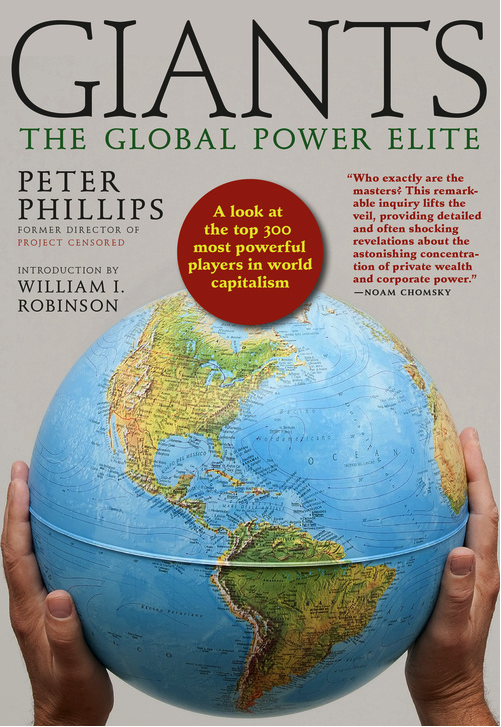

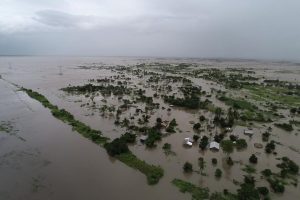




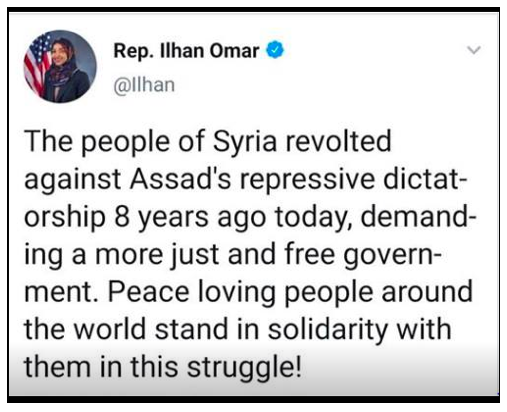

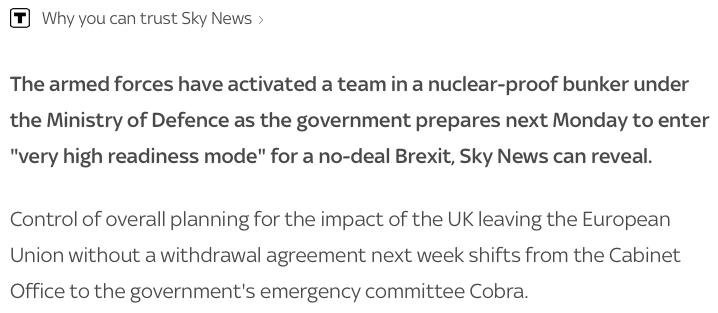











 olve the endless Balkan ethnic wars of its past history.
olve the endless Balkan ethnic wars of its past history.
